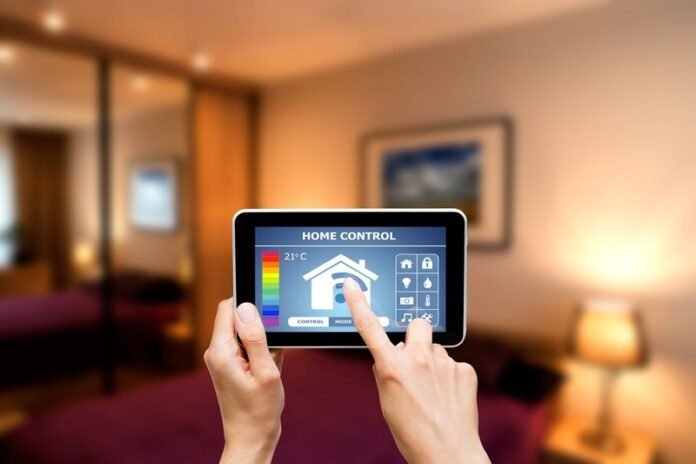In today’s tech-driven world, lighting isn’t just about visibility—it’s about intelligence, adaptability, and efficiency. One technology leading this shift is DALI (Digital Addressable Lighting Interface). Designed to offer precise digital control over lighting systems, DALI lighting has become a game-changer in the world of smart building automation.
Whether it’s an energy-conscious office, a LEED-certified skyscraper, or a luxury hotel, DALI lighting is now the backbone of intelligent lighting design. But why is it so powerful—and why is it the future?
Table of Contents
What Is DALI Lighting?
DALI is a globally recognized standard (IEC 62386) for digital lighting control. It enables lighting components—like ballasts, drivers, and sensors—to communicate with each other on a two-way network. Each component has a unique address, allowing individual or group-level control from a central system.
Unlike analog systems, where wiring is complex and control is limited, DALI systems are scalable, flexible, and easier to maintain. Think of it as the Wi-Fi of lighting control—intuitive, efficient, and programmable.
Why DALI Lighting Matters In Smart Buildings
Let’s break down why DALI is the perfect fit for the buildings of tomorrow:
Precision Control = Massive Energy Savings
DALI lighting lets building managers control lighting at the zone or fixture level. You can dim, switch, and schedule lighting based on time of day, occupancy, or daylight levels. This results in up to 60% energy savings in commercial buildings.
Plus, it integrates seamlessly with motion detectors and daylight sensors, ensuring lights are only on when needed.
Easy Integration with Building Management Systems
DALI can be integrated into broader BMS platforms (e.g., KNX, BACnet, or LonWorks), allowing for centralized control of lighting, HVAC, security, and more.
Whether you’re managing a 20-floor commercial building or a smart home, DALI works hand-in-hand with IoT and cloud-based platforms.
Scalability: From a Single Room to an Entire Campus
One of DALI’s greatest strengths is its scalability. Need to control lighting in a single conference room? DALI can do that. Planning a large multi-zone lighting grid across a hospital or airport? DALI scales seamlessly—without rewiring.
With DALI-2, the updated version of the protocol, interoperability between devices is more reliable than ever, with backward compatibility ensured.
Remote Monitoring & Predictive Maintenance
DALI systems support two-way communication, which means they can report back on failures, power consumption, or lamp status. Facilities managers can detect an issue before a complaint even happens.
Imagine receiving a notification that a corridor light is about to fail—before it ever does. That’s smart lighting maintenance.
Better User Experience & Human-Centric Design
Smart buildings are about enhancing the lives of the people inside them. DALI lighting systems can be programmed for dynamic lighting scenes, color temperature adjustments, or task-based illumination—all tailored to user preferences.
Studies show that proper lighting improves mood, focus, and sleep cycles, especially when light mimics natural daylight throughout the day.
Wireless DALI: DALI+ and the Future of Connectivity
With the rise of wireless control systems, DALI+ allows DALI lighting systems to be extended over wireless IP-based protocols like Thread or Bluetooth Mesh. This opens up even more opportunities for smart retrofitting in older buildings.
Wireless DALI also supports future-ready applications like voice control, occupancy analytics, and geo-fencing.
Lower Installation & Lifecycle Costs
While the initial setup of DALI might be more expensive than basic analog systems, the long-term ROI is unbeatable. Reduced energy bills, longer lamp life, automated controls, and decreased maintenance result in significant lifecycle cost savings.
Additionally, the simplified wiring—only two wires for data and power—makes upgrades and zoning much easier than with traditional relay systems.
Regulatory Compliance & Open Standards
DALI is a non-proprietary, open protocol, meaning it’s supported by hundreds of manufacturers worldwide. This gives engineers and developers the flexibility to choose the right devices—no vendor lock-in.
Its compliance with global standards makes it future-proof, especially in regions tightening energy and automation regulations.
The Future Outlook: Smart, Sustainable, and Fully Connected
As urbanization accelerates and smart cities become the norm, DALI lighting will be foundational to how we design and manage environments. The demand for flexible, intelligent infrastructure is growing rapidly—and DALI is ready.
From schools and hospitals to airports and data centers, DALI is proving it can do more than just “turn the lights on.” It’s about efficiency, connectivity, and user experience in the age of automation.
Final Thoughts
If you’re a building manager, architect, electrical consultant, or facility owner looking to future-proof your infrastructure, DALI lighting isn’t just a trend—it’s a necessity.
As IoT, AI, and sustainability converge in the built environment, DALI lighting stands at the intersection of control, comfort, and cost-efficiency. The future is smart—and DALI is lighting the way.








